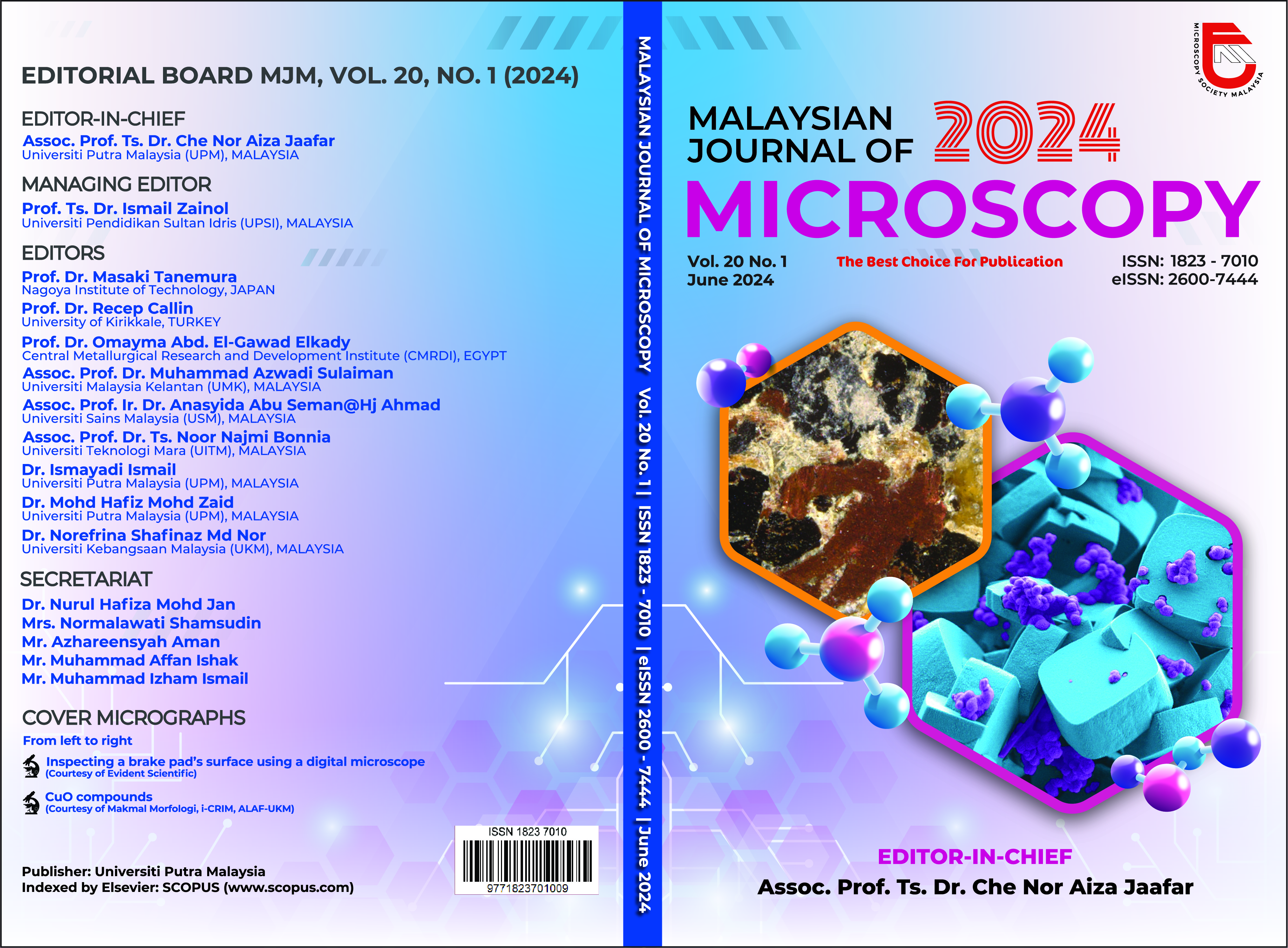PHYSICOCHEMICAL AND MORPHOLOGICAL CHARACTERISATION STUDIES OF FABRICS TREATED WITH LAVENDER ESSENTIAL OIL-BASED NANOEMULSION
Abstract
Lavender essential oil is a concentrated plant extract obtained through steam distillation. It is well known for its properties as a good anxiety and stress reliever, for wound healing, for insect repellency and as an insomnia fighter. However, there are many volatile chemical compounds in the essential oil. Hence, formulating a lavender essential oil nanoemulsion is a potential solution to prolong those exclusive applications of the essential oil. Lavender essential oil-based nanoemulsion (LEONE) was prepared with tragacanth gum and Triton X-100 by a combined method of ultrasonic and high-speed homogenisation. This study focused on the physicochemical and morphological characterisation effects of fabrics treated with LEONE. Morphological and physicochemical evaluation of nanoemulsions were conducted by optical microscopy (OM), high resolution transmission electron microscopy (HR-TEM) and Fourier transform infrared (FTIR) spectroscopy. Ultraviolet-visible (UV-Vis) spectroscopy was utilised to evaluate the encapsulation efficiency of the nanoemulsion. Surface morphologies of LEONE on cotton, polyester and tetoron were observed using field emission scanning electron microscopy (FESEM). OPM images demonstrated fine and reasonably monodispersed distributions of nanoemulsion. In TEM images, LEONE exhibited spherical shapes and in the size range of 55-90 nm. The successful blending of the materials was identified via FTIR spectroscopic functional group analyses. The successful encapsulation of essential oil into the nanoemulsion was proven by the high encapsulation efficiency of close to 90 %. Deposition of LEONE affected the surface morphologies and total porosity of fabrics slightly. The results obtained are useful for applications in household and medical fields, especially in relation to sleep deprivation.


